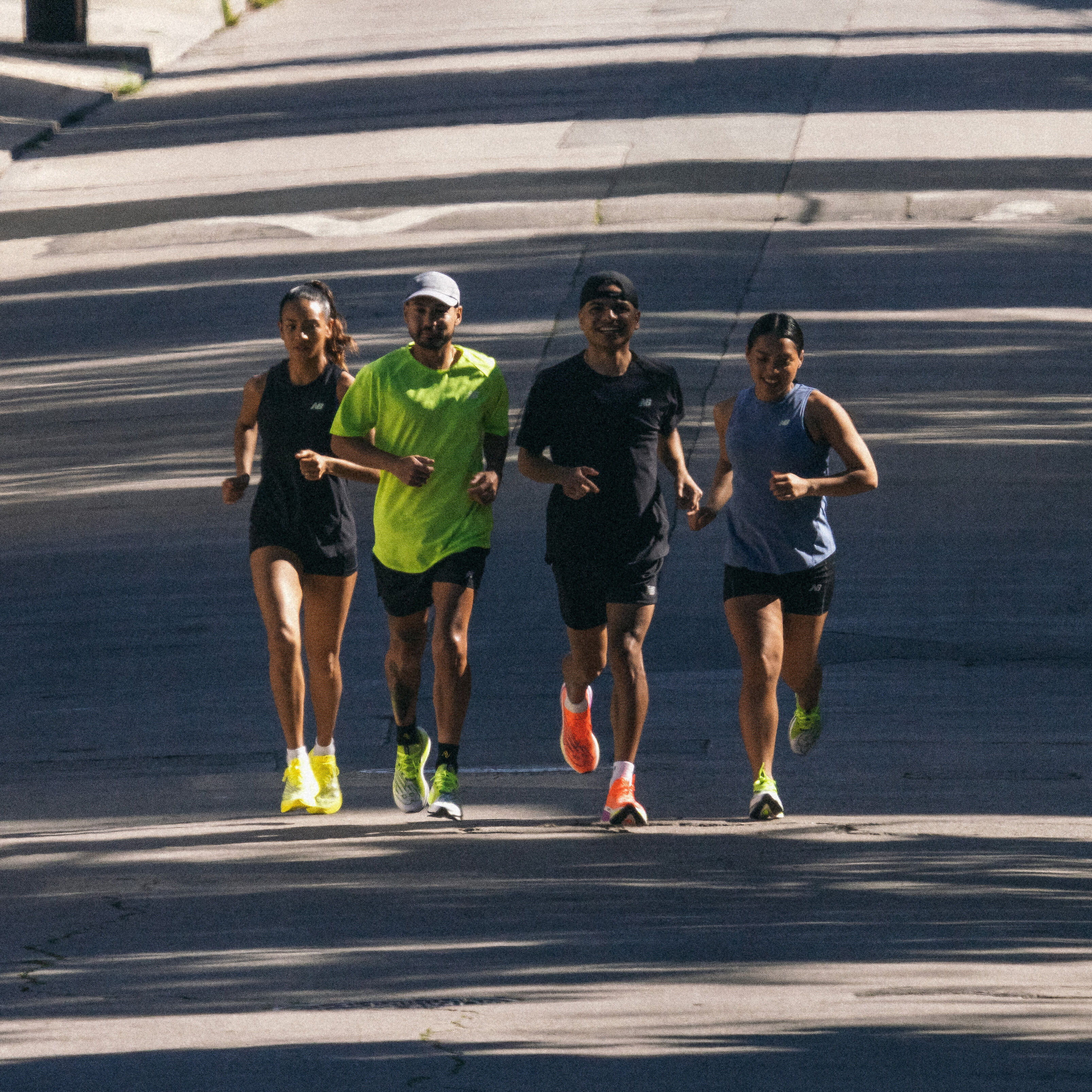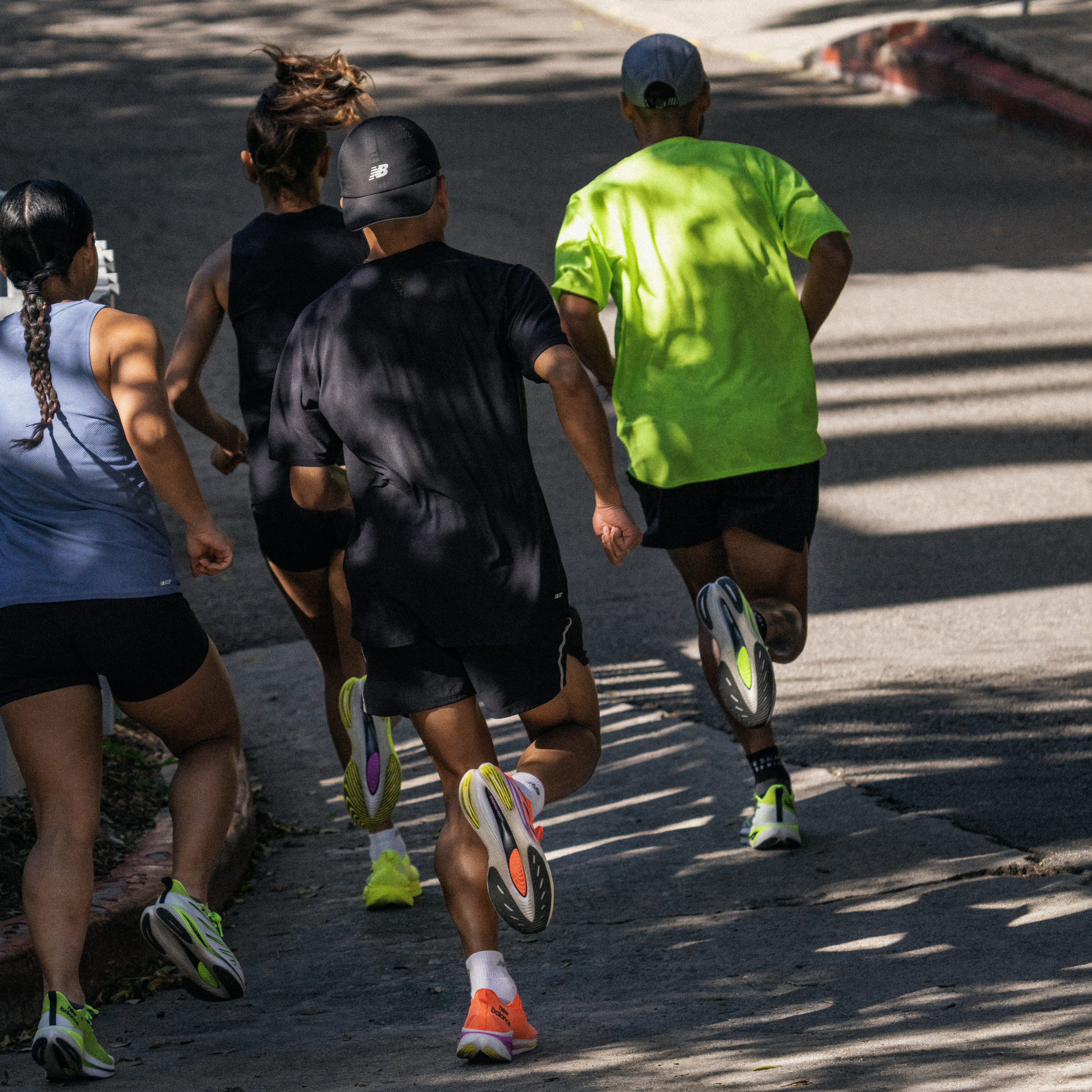
What is fartlek training?
Fartlek training dates back around 80 years to when Swedish coach Gösta Holmér developed a new approach to training that focused on improving speed and endurance. Today, it’s a really popular way to make training sessions more interesting, prepare for long-distance races, and generally improve running ability.
Fartlek training definition
Fartlek training is a type of training where faster running is alternated with periods of running at a slower, less intense pace. It’s different to standard interval training because, with fartlek training, you run continuously, rather than periodically stopping or walking. While you mix up your speed/intensity levels, you never actually stop running.
The fartlek running workout – a type of speed play training
It helps to think of fartlek training as a type of unstructured speedwork – you get to set the parameters and you can switch them up throughout your session as much as you like. For example, you might decide to run fast for a minute then slow down for three minutes, then run fast for a minute and a half. Or you might use landmarks instead, running at an intense pace until you
reach the end of the road, then slowing until you reach that lamppost up ahead. You get the picture!
The idea is that you’re in control, as the runner. So you can play around as much as you like. There’s something nice about trusting your instincts and the feel of the run rather than relying on metrics like your heartrate. Try to visualise your running effort on a scale from 0-10, or to think of it in percentage terms. During your ‘off’ intervals, give it 40 to 60 percent, and for your ‘on’ intervals go for 70 to 90 percent.
Is fartlek training aerobic or anaerobic?
The beauty of fartlek training is that it offers both aerobic and anaerobic benefits. This is because you’re continuously running, meaning your heart and breathing rate are increased over a sustained period (giving you aerobic benefits). But you’re also incorporating bursts of more intense exercise, which provides anaerobic benefits.
All this does mean fartlek training can feel pretty intense. Which is why it can be a good idea to approach it with a trial and error mindset, and to avoid being harsh on yourself if you go too hard on the ‘intense’ intervals initially.



Fartlek training examples
There are different types of fartlek training, which can be as structured or unstructured as you like. You might set out to stick to a specific routine of fartlek intervals, or just see how you feel when your feet start hitting the ground. You can also choose whether you go for longer intervals at a steady pace, with short bursts of intensity, or longer intervals at a more intense pace with short, slower recovery periods. The latter option can be helpful if you’re training for a marathon, as you’ll essentially be practicing doing longer intervals at your race pace.
Here are a few examples of how you might incorporate the fartlek training method into a session. Aim to repeat these for around 20 minutes or longer, or simply go with the flow!
• 30 seconds hard / 60 seconds easy x 10
• Three minutes hard / 60 seconds easy x 4
• 90 seconds hard / 90 seconds easy x 2 | 60 seconds hard / 60 seconds easy x 4 | 30 seconds hard / 60 seconds easy x 4 | 15 seconds hard / 15 seconds easy x 4
• Simply use your surroundings and landmarks – for example, run up a hill hard then down again easy, or run to a landmark hard then to the next landmark easy.
As you can see, there are no hard and fast rules for a fartlek run. Take it as an opportunity to really listen to your body, and enjoy the spontaneity this can bring.
Advantages of fartlek training
The benefits of fartlek training are pretty plentiful, hence why even Olympian athletes incorporate it into their regime. Check out the benefits of fartlek running:
Helps you take things up a notch: Fartlek training can be a fantastic option for relatively new runners who are looking to take that next step towards getting faster. In this case, opting for more structured sessions can be really useful. These can help you to bridge the gap between where you are now and the pace you need to achieve for that race on the horizon.
Gives you a taste of a real-life race: When you’re running a race, you generally don’t get to come to a full stop to rest. Instead, you’ll go through periods where your running slows so you can get some respite without losing too much distance. Fartlek training mirrors this concept exactly, giving you a great way to get familiar with that can’t-stop-won’t-stop feeling before the real thing.
Can burn more calories: Incorporating higher-intensity intervals into your usual steady session has the potential to burn more calories. This should be the case as long as your total average pace is higher than your standard pace.
Can feel more interesting: Switching things up when it comes to running intensity can definitely help a session feel more varied and interesting. You might even find you can ditch the podcast as you play around with your ability and routine.
Helps you build physical and mental stamina: Running at a more intense pace than you’re used to can feel super challenging at times. But when you’re easing yourself into this with short bursts, spread out between the steadier pace you’re more familiar with, things feel much more doable. It’s a great way to teach both your mind and body that, yep, you’ve got this!
Disadvantages of fartlek training
While fartlek training can be fun and productive from a training point of view, there are some potential pitfalls to be aware of too:
It can take a while to find your pace: It’s important to go easy on yourself with fartlek running, as it can feel quite challenging at first. If you’re not up for a bit of trial and error, this might not be the best training option for you.
It’s easy to overdo: When all’s said and done, anything that involves adding more intensity to your running sessions makes it easier to overtrain. Fartlek sessions should never really make up more than 20 percent of your training plan.
It’s not ideal for training with others: You might have wildly different interval abilities than your friends, which can make fartlek training tricky. It’s probably easier to run at one steady pace with others. On the flipside, if you do happen to have a training buddy that can match your interval paces, fartlek training can be pretty fun to do with someone else.
It doesn’t lend itself as well to tracking progress: The nature of fartlek training means it’s probably less appealing to those who are religious over tracking their heart rate, monitoring improvements, and generally keeping a close eye on running data. This is just a personal preference kind of thing.
Fartlek training equipment
Fartlek training doesn’t require any special gear – trail running shoes are perfect if you’re taking your sessions off road, otherwise your usual running footwear will work just fine. One thing to bear in mind is that you might work up more of a sweat thanks to the more intense intervals of fartlek training. Head to our men’s clothing and women’s clothing ranges to browse workout-wear crafted
from our signature NB DRY fabric that helps to wick sweat away – no matter how intense the training session.
And that’s a wrap. In summary – fartlek training can be a great way to improve your stamina, prepare for a race, or simply add more interest to your runs. Remember to have fun with it – the clue’s in the name! Here’s to mastering the art of speed play: interval training’s more laid-back cousin.



-square.jpg)